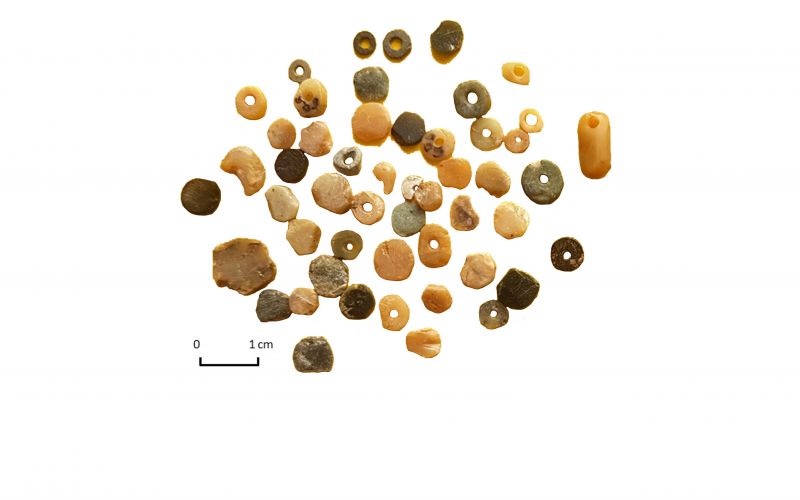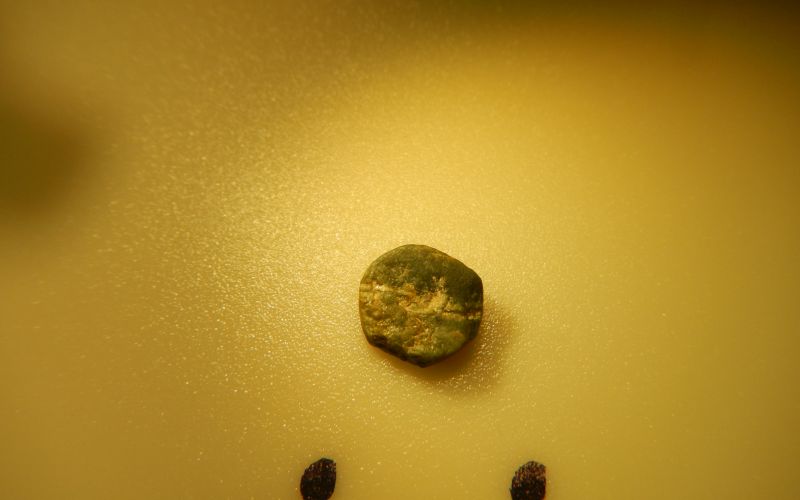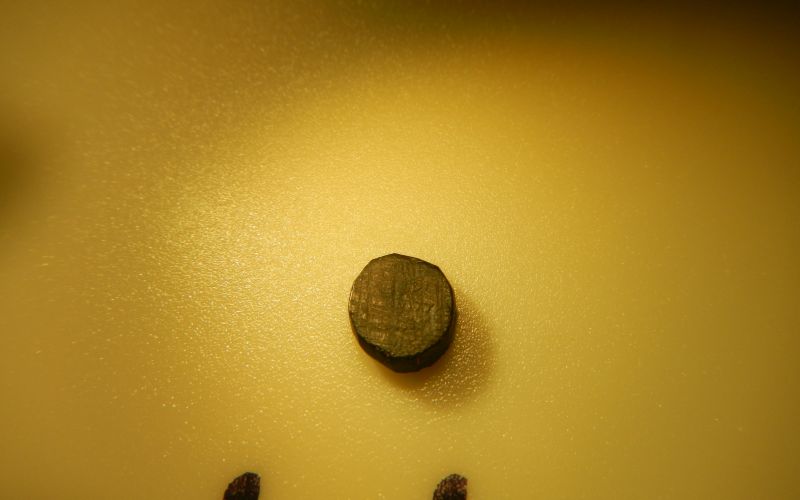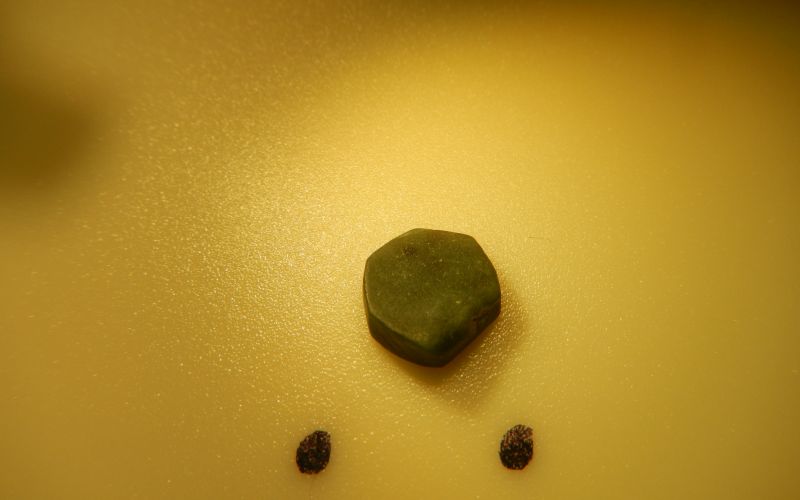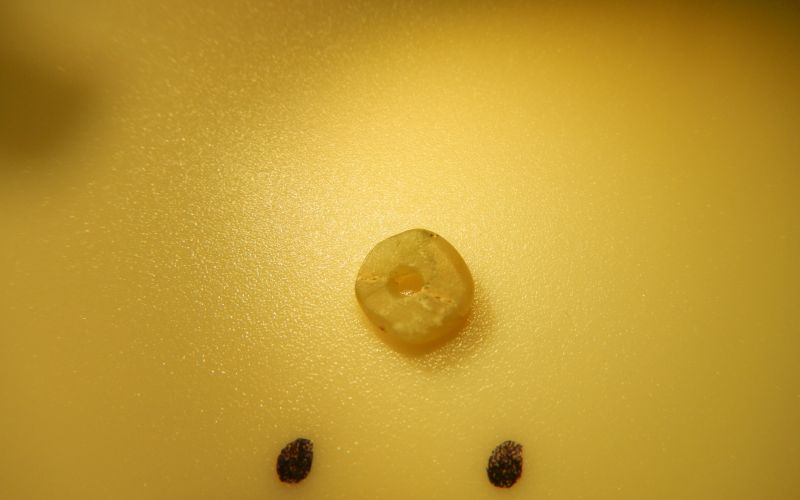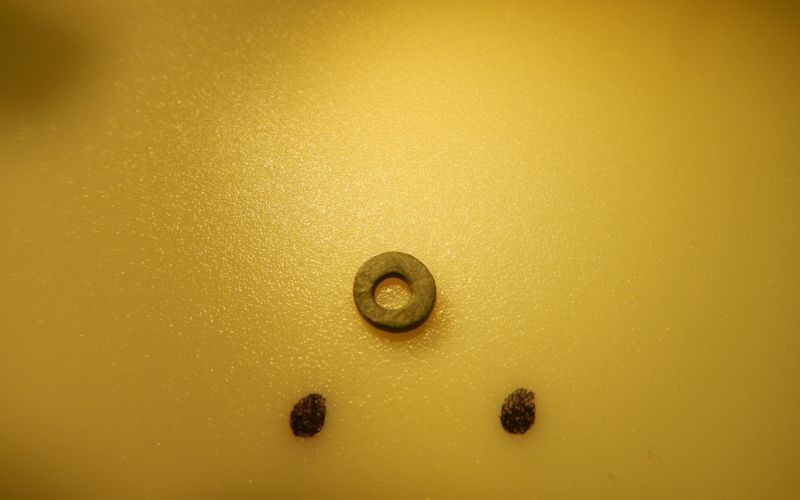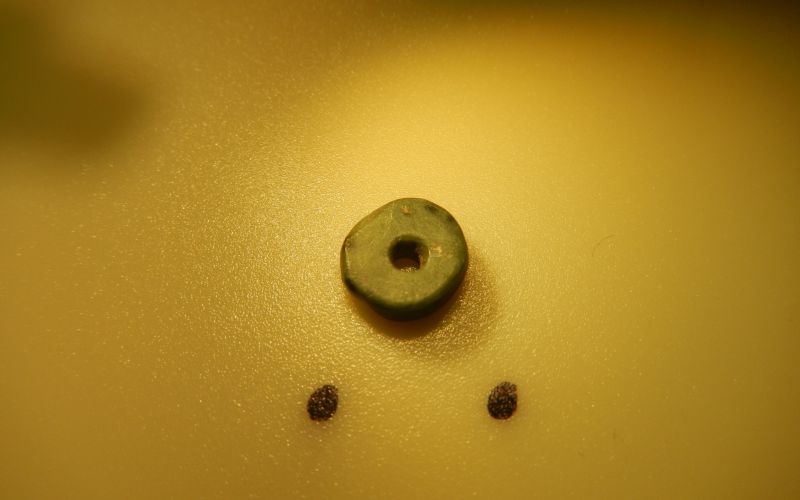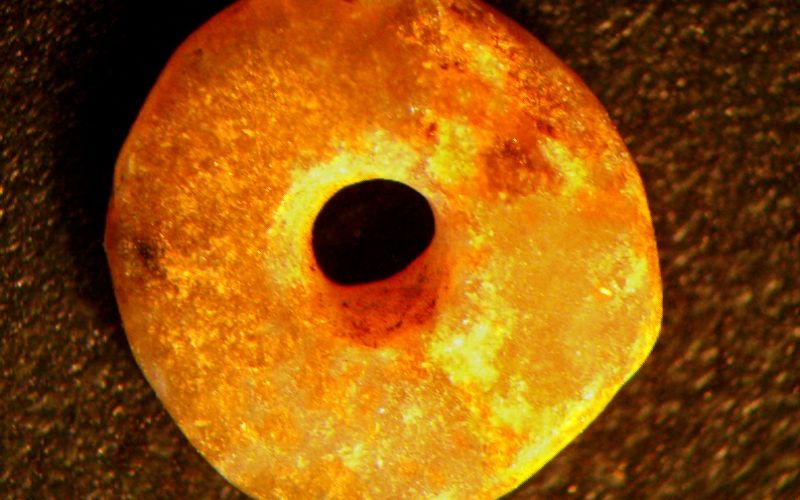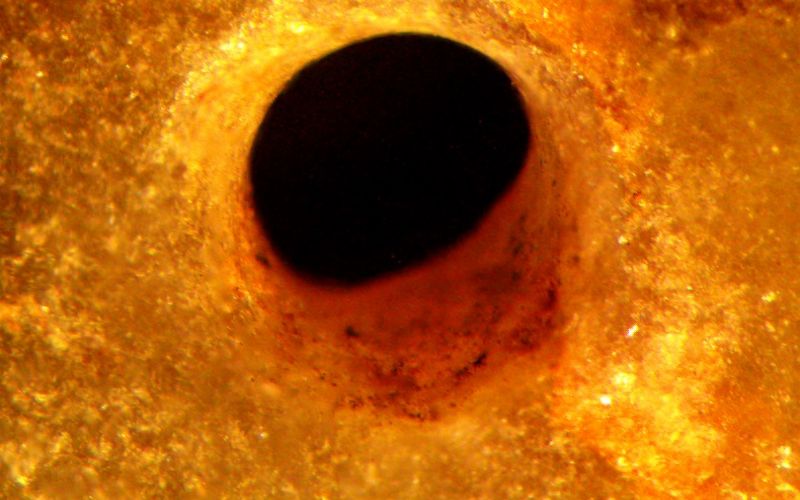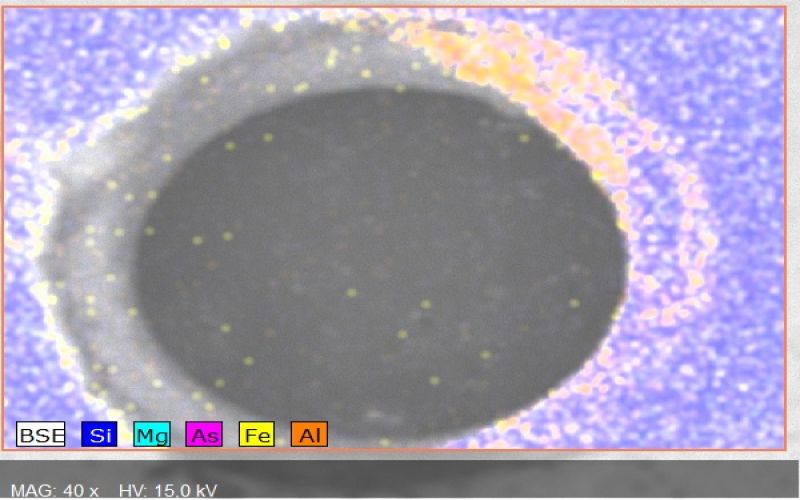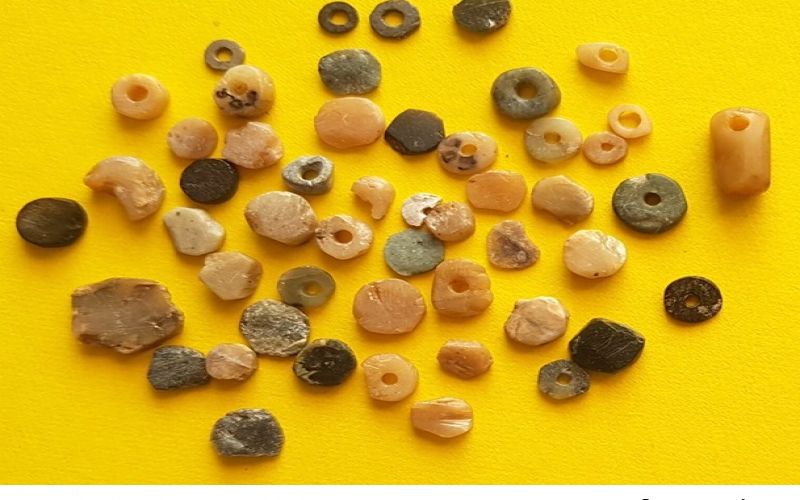Threading beads and their blanks
Items are rounded, flat in profile, with one hole in the center (beads). They are made mainly of soft rock, including pyrophyllite (agalmatolite).
The blanks are small round items without traces of drilling, in some cases there is a notch for mounting.
Traces of artificial red paint have been remained on the surface of the pendant and some of the beads. The artificial composition is indicated by low iron values and the presence of organic additives.
Manufacturing technique
The raw materials were broken into small fragments and, giving the blanks a round shape, have their edges treated. Then a hole was drilled in the center of the blank. Further, the blanks were strung on rods about 20 cm long. After that, the beads, strung in bundles, were ground on a sandstone slab, rolling them with two palms on the slab back and forth. After sharpening, all the beads that were on the same branch were of the same diameter.
A similar process of making beads is recorded in the ethnographic descriptions of the Californian Indians (Kashaya people), where Klama shells were used instead of stone.
Use-wear traces
No.
Storage location
North-Eastern State University, Magadan cityInventory number
Ушки-V-2007The Museum KAMIS
NoSize
Diameter – 3-7 mm
Thickness – 1-3 mm
Material
Pyrophyllite (agalmatolite)Dating
13300 – 12500 years BPCulture
Ushki V site, cultural layer VII, transition from the Paleolithic to the Neolithic, the end of the Pleistocene.The author of the excavations
Ponkratova I.Yu.2007
Publications
Ponkratova I.Yu., Gubar Yu.S., Lbova L.V. Spektralnyy analiz okrashennykh artefaktov sloya VII stoyanki Ushki V (poluostrov Kamchatka) // Universum Humanitarium. 2019. № 1. S. 56–71.
Ponkratova I.Yu. Etapy zaseleniya territorii u Bolshogo Ushkovskogo ozera na Kamchatke v kontse pleystotsena – golotsene // Arkheologiya. etnografiya i antropologiya Evrazii. 2020. T. 48. № 1. S. 41–51.
